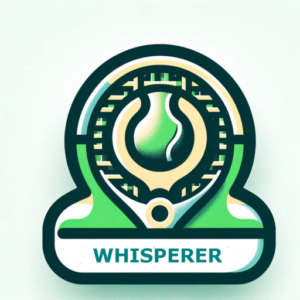The Paradox of Power
The Paradox of Power
The paradox of power in tennis is timeless: the less you force it, the more it flows.
Tension is the great disruptor of power. A clenched jaw, rigid grip, or locked shoulder interrupts the kinetic chain that transfers energy from the ground through the body into the racquet head. When one link tightens, the sequence breaks, and your effort turns to resistance.
The best players don’t hit harder — they swing smoother. Their strokes are fluid, their swings rhythmic, their power the natural product of coordination rather than contraction. They know that a free body is a fast one.
Relaxation Is Readiness, Not Passivity
Relaxation isn’t passivity — it’s organized readiness. It’s a body poised to move fast without interference. When muscles stay supple and balanced, they synchronize efficiently — legs loading, hips coiling, torso rotating, and the arm releasing in sequence.
This principle applies to every shot — the forehand that explodes with effortless heaviness, the backhand that glides through the ball, the volley that feels like a brush of silk. When you stay loose, the racquet accelerates on its own.
A tight body tries to hit; a relaxed one allows power to happen.
The Musician’s Parallel: Why Manufactured Strokes Break Down
High-level tennis is closer to music than machinery.
A pianist can’t strike every note with force — they rely on rhythm, touch, and flow. Their hands must stay loose so the melody can breathe. The same truth holds in tennis: fluidity creates speed. When the body is relaxed, each segment — hips, core, shoulder, arm, hand — moves in harmony, transferring force like a well-timed symphony.
But “manufactured” strokes — those built on conscious control and mechanical effort — collapse under pressure. They depend on thinking, not feeling.
As tension rises, the brain shifts from automatic to analytical control. Muscles overactivate, timing fragments, and the stroke loses its sequence. The player starts “steering” the ball instead of swinging through it. The racquet path shortens, the contact zone tightens, and power disappears.
This is the difference between mechanical power and musical power. The first is stiff, the second is alive.
When players reconnect with rhythm — feeling the bounce, syncing their breath, trusting the sequence — the mind gets out of the body’s way. Energy flows again.
That’s why rhythm is the foundation of both artistry and performance: the nervous system can only move fast when it feels safe.
Resetting When Tension Creeps In
Even seasoned players feel stiffness sneak in — especially when chasing control or trying to “do more.” That’s your signal to reset:
-
Breathe: Exhale slowly before each point. A full release calms the system and frees your shoulders.
-
Loosen the Grip: Hold the racquet as if it could slip, not as if you’re trying to trap it.
-
Find Rhythm: Use bounce-hit timing or shadow swings to restore tempo.
-
Trust the Body: Let the ball come to you — acceleration should feel like release, not effort.
When the breath flows, the swing follows.
The Physics of Ease
Relaxation isn’t mystical — it’s biomechanical. As Gavin MacMillan’s work in balance and motor control teaches, true force production depends on coordination, not tension. Power emerges when the sequence of movement transfers energy without leaks. Tension blocks that transfer.
A balanced, rhythmic athlete channels ground force through the body like a whip — fluid, elastic, efficient.
Relaxation is what connects strength to speed.
Whisperer Wrap
Power isn’t something you create — it’s something you allow.
When your mind quiets and your body stays loose, gravity and rhythm do most of the work. Your game becomes lighter, faster, freer.
So the next time you swing, remember: Don’t hit harder. Swing smoother.
Let the music play through your motion — and let the power come from peace.



